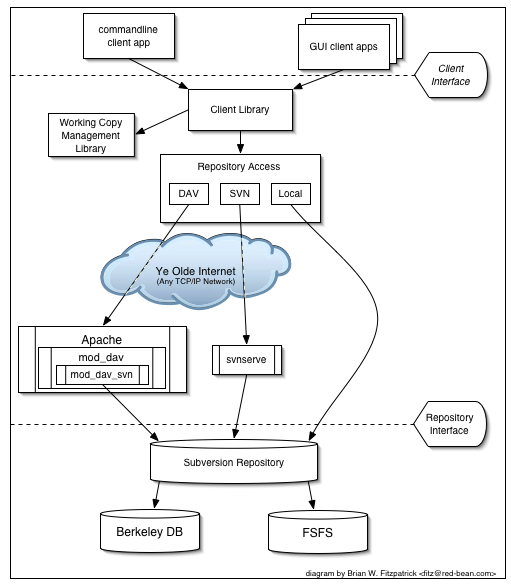Subversion Development
Getting Involved
The best way to get involved in Subversion development is to submit a patch to fix a bug or add a new feature. If you don't know what to write a patch for, have a look at the list of open issues.
Subversion development discussion takes place on the mailing list dev@subversion.tigris.org. You don't need to subscribe to the list just to submit a patch or two, but if you want to be involved with Subversion development on a regular basis, you should subscribe. It's high-traffic, but threading tends to be fairly disciplined, so you can ignore conversations you aren't interested in.
For real-time chat, developers use the IRC channel irc.freenode.net/svn-dev (some also hang out in the user-support channel, irc.freenode.net/svn).
The Hacker's Guide to Subversion contains information about submitting patches, learning your way around the code, interacting with other developers, project governance, etc. If you don't see the answers you need there, please ask on the mailing list or in IRC, we're happy to help.
You should probably also subscribe to the following lists that receive automated mails:
- svn@subversion.tigris.org (commit emails)
- issues@subversion.tigris.org (issue tracker)
- svn-breakage@subversion.tigris.org (automated builds)
...all of which are available via the project mailing lists page.
What Needs Doing
See the tasks page for an incomplete list of what needs doing.
See the roadmap page for a rough outline of Subversion's medium- and long-term future.
Translating Subversion output
Subversion's programmatic output is translated into many languages, and this work is done by volunteers. You could be one of those volunteers.
See Localization section in the Hacker's Guide to Subversion for more information about translating.
The Big Picture
(Inferred from the design document)
